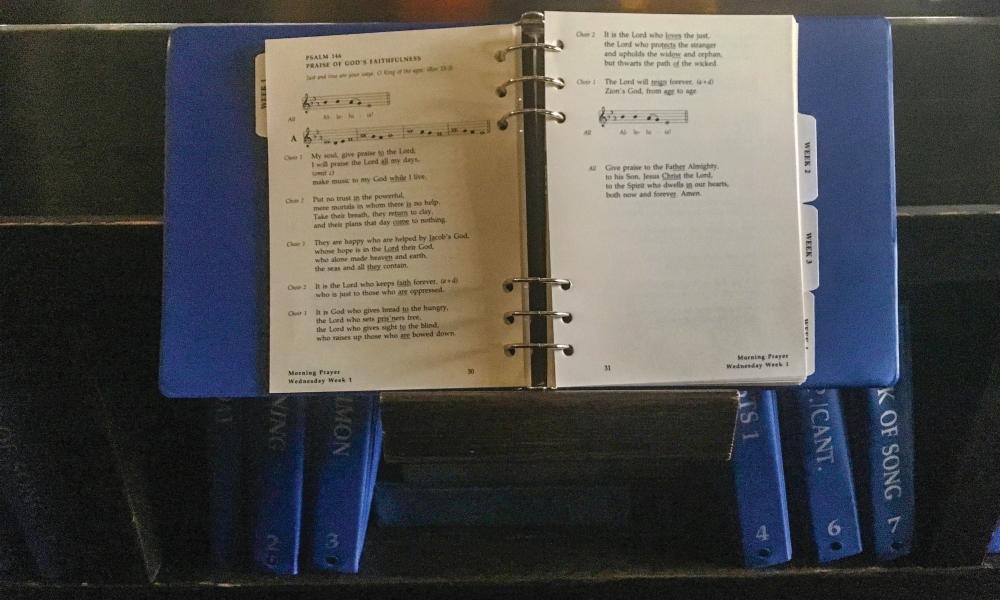
Mass Appeal Part II
In the midst of winter, I must return to summer for part II of Mass Appeal. A highlight of my sojourn to the Midwest was a weekend at St. John’s Abbey in Collegeville, Minnesota. Collegeville encompasses St. John’s University, St. John’s Abbey, and the Liturgical Press. Worship, the venerable publication of LP, had been a staple of my liturgical and theological diet. The attraction of St. John was not the campus or the press, but the abbey itself. I am not a monk and never wanted to be a monk, but to pray with the Benedictines is a treat. This abbey in the heartland is supposed to be a model of liturgy. I wanted to be part of it, even for only a weekend.
The main attraction at the abbey is the Liturgy of the Hours: morning, midday and evening prayer. The Benedictines have their own version of the Hours. I don’t know why. Isn’t the default LOH sufficient? Maybe it has something to do with keeping their publishing house in business. To pray the Hours, you don’t just flip pages; you flip books: hymnal, psalter, and the volume of responsorials and canticles. A sign board provides the hymn number and the week of the psalm cycle, but that isn’t much help. Apparently it is anathema to make announcements like: “Dear brethren and friends, let’s greet the morning with voices raised in praise and thanks. Turn to page 234 in your hymnal to sing, ‘It’s a brand new day,’ all verses.” No, we did not sing “It’s a brand new day,” but by the time I located whatever hymn we sang, it was over. Happily, a gentleman in the next choir stall (at the abbey, there is sufficient seating in the choir for the monks and visitors) knew what he was doing, and helped me find my way in the psalter and the responsorial books. The problem of managing the manuals was alleviated after Friday’s evening prayer. This was the weekend of the Oblates’ retreat. They were asked to remain after prayer, and the next morning we came to choir and found the three books at each stall opened to the proper pages. Everything was fine.
As for the celebrations of the Mass, there was nothing exceptional, which is the way Mass ought to be. The age of gimmicks and goofiness has passed. Do what is supposed to be done. The Mass should be a prayer of the community, not a performance of the celebrant and other ministers. I do, however, recall one of the homilies based on the day’s Gospel, Matthew 12: 1-8, wherein Jesus quotes the prophet Hosea: “I desire mercy, not sacrifice.” The homilist repeated that exhortation and added: “On a hot summer’s day, celebrating Mass in a non-air conditioned church seems like sufficient sacrifice. A little mercy is in order.” Finis.
The Abbey church that also serves as the university church is from the Bauhaus architectural school. Father David enlightened me about Bauhaus: it favored concrete construction with minimal ornamentation. The abbey church fits the bill: big, muscular and built to last. “A Mighty Fortress is Our God” meshes well with this space. “Softly and Tenderly, Jesus is Calling”—not so much. The massive “bell banner” fronting the church gives one an idea of the Bauhaus effect. There is Father David at the base support. This is BIG.
Another Bauhaus inspired creation was a concrete sculpture that we passed on our commute from from the housing area to the church. It had to mean something. A hint is that a right turn at this point takes one to the university’s athletic complex. So, appropriately, the sculpture is named “The Athlete.” And after shooting the picture, I noticed something nearby. “I can run faster than you!”



